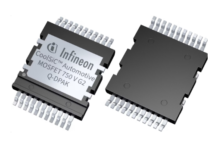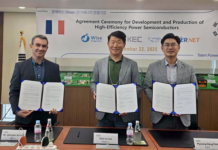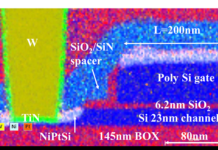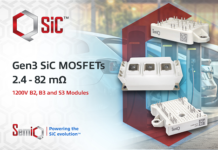They may be small, but advanced IC substrates are making a big impact behind the scenes of every advanced electronic device. From the latest smartphones to AI-powered servers, these tiny platforms are doing the heavy lifting, enabling faster speeds, slimmer designs, and more powerful performance. As technology continues to push boundaries, IC substrates are evolving just as rapidly, becoming a silent yet critical force in the pursuit of smarter, smaller, and more efficient electronics.
What are Advanced IC Substrates?
Advanced IC substrates are high-performance base materials used to connect and support semiconductor chips within electronic devices. They serve as the crucial interface between the silicon chip and the printed circuit board (PCB), enabling electrical connections, power distribution, and signal integrity. Designed to handle the increasing complexity of modern chips, such as those used in AI, 5G, and high-performance computing, these substrates offer finer circuitry, better thermal management, and higher reliability, making them essential for next-generation electronics.
Market Metrics
The advanced IC substrates market size was valued at USD 17.08 billion in 2024. It is projected to register a CAGR of 9.6% between 2025 and 2034.
Key Types of Advanced IC Substrates
As chips become more complex and compact, advanced IC substrates are evolving to meet specific performance and packaging demands. Here are the most common types used across the electronics industry:
Flip Chip Ball Grid Array (FC-BGA): High-performance substrate widely used in CPUs, GPUs, and networking chips; supports high I/O density and superior thermal/electrical performance.
Flip Chip Chip Scale Package (FC-CSP): Compact and cost-efficient, ideal for smartphones and portable electronics where space is limited but performance is critical.
Embedded Multi-Die Interconnect Bridge (EMIB): Used in 2.5D packaging to connect multiple dies on a single substrate; common in high-end applications such as AI and HPC.
System-in-Package (SiP) Substrates: Integrate multiple ICs and passive components in one module, enabling miniaturized, multi-functional systems for wearables and IoT devices.
High-Density Interconnect (HDI) Substrates: Feature fine lines and microvias to support high-density circuits; often used in advanced mobile devices and miniaturized systems.
Tape Substrates (e.g., COF – Chip on Film): Flexible substrates used in display drivers and thin electronics, offering high precision in compact, curved, or flexible designs.
Core Advantages of Advanced IC Substrates
As the demands on semiconductors continue to rise, from powering AI algorithms to enabling ultra-fast 5G connections, the role of advanced IC substrates becomes more critical than ever. Here are some of the core advantages of advanced IC substrates:
High-Density Interconnection
Advanced IC substrates enable finer lines, tighter spacing, and multiple routing layers, which allow more complex circuitry to be integrated into smaller footprints. This high-density capability is crucial for today’s compact devices and multi-chip packages, where space is limited but performance demands are high.
Improved Electrical Performance
With better signal integrity, controlled impedance, and lower power loss, these substrates support high-speed, high-frequency operations essential in processors, memory modules, and communication devices. This leads to faster data transmission and overall improved chip performance.
Enhanced Thermal Management
As chips become more powerful, they generate more heat. Advanced IC substrates are designed with materials and structures that help dissipate this heat efficiently, preventing thermal damage and maintaining consistent device performance over time.
Mechanical Strength and Reliability
These substrates offer robust mechanical support for fragile semiconductor dies, reducing the risk of cracks or damage during assembly and use. They also improve overall product durability, which is especially important in automotive, industrial, and aerospace applications.
Compatibility with Advanced Packaging
Advanced IC substrates are a foundational enabler of modern packaging technologies such as 2.5D, 3D stacking, and chiplets. They allow seamless integration of multiple dies or heterogeneous components within a single package, supporting the trend toward system-level integration.
Trends and Future Outlook
The advanced IC substrates market is growing rapidly, driven by rising demand for high-performance chips used in AI, 5G, and advanced consumer electronics. As chip designs become more complex, there’s a strong shift toward substrates with higher density, better thermal control, and support for advanced packaging such as 2.5D and 3D integration. With chiplet architectures on the rise and continuous investment in R&D and capacity, the market is poised for sustained growth, making substrates a key enabler of next-gen semiconductor innovation.
In Conclusion
Small in size but massive in impact, advanced IC substrates are the unsung heroes powering the digital age. As demand for faster, smaller, and more intelligent devices continues to grow, these substrates will remain at the heart of innovation, enabling everything from compact smartphones to high-performance AI systems. With continuous advances in packaging, materials, and design, the future of electronics will be built on the quiet strength of these foundational technologies.


















